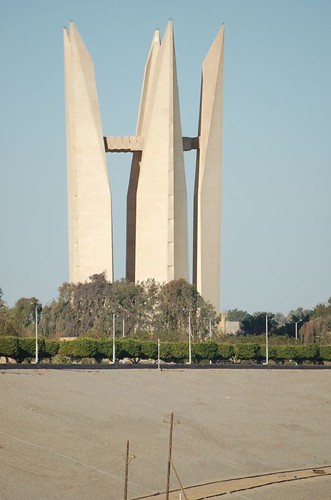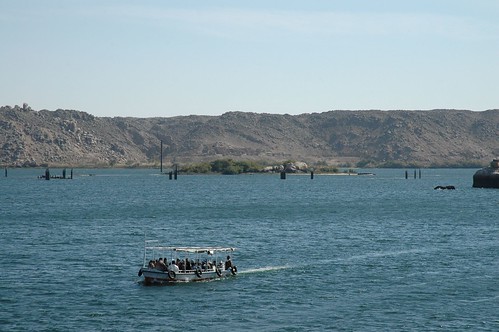In 1959, the decision to build Egypt’s Aswan dam was hair-raising to Unesco, which launched an international campaign to prevent the extraordinary temple of Abu Simbel, a treasure trove of Egyptian civilization, was devastated by the torrents of Nile

Photography by Frostie2006
Finally, thanks to donations from 50 countries, the temple was dismantled and moved to higher ground and secure (the cost of the campaign amounted to $ 80 million).
The success of this effort Pharaonic (never better applied the term) inspired the development and adoption in 1972 of the World Heritage Convention of UNESCO, which was ratified by 184 countries.
At first there were two movements: one that favored the preservation of cultural sites, and a second that was struggling for the preservation of nature. Finally, all parties to agree to include both aspects, cultural and natural, the text of the convention.
Over 30 years later, formally added the category of intangible heritage, also called living heritage, would become the industry’s intangible cultural heritage. Consist, basically, popular cultural events that contribute to shaping the identity of peoples, and in many cases are at high risk of extinction, as might be Gelede oral tradition in Benin.
Photography by Gaspa
It is not the case of the tango in our country, which is more alive than ever, but that nonetheless earned the distinction of Unesco less than a year ago. Other cultural expressions were also declared Intangible Cultural Heritage of Humanity are Chinese calligraphy, the Carnival of Blacks and Whites in Colombia, Uruguay Candombe, the procession of spring queens Gorjani in Croatia or indigenous ceremony of the flyers in Mexico.
What brings practical purposes this distinction? None, beyond the recognition of having a heritage that is valued universally.
But in the case of tangible cultural heritage and under certain conditions, sites can obtain funding for their conservation. The money is obtained the so-called World Heritage Fund, which in turn is fed by compulsory contributions from countries that are part of the convention.
One of the longest campaigns safeguard held in Venice between 1966 and 1993, after the great flood of 1965 (dozens of buildings were restored, including the Doge’s Palace).
How are cultural property? The process is neither simple nor short, but enough to know that candidates, which are presented by member states, must have an outstanding universal value and meet at least one of a list of 10 requirements from representing a masterpiece of human creative genius to contain areas of outstanding natural beauty and aesthetic importance.

Photography by Peter Shanks
But be aware that the distinction is not forever: if a country does not comply with its obligations under the convention runs the risk that their sites are removed from the World Heritage List.
What happened in 2009 with the Elbe Valley in Dresden, where the construction of a bridge in the heart of the cultural landscape failed to preserve the outstanding universal value for which you registered.
Until now, UNESCO awarded its coveted award to 890 sites, of which 689 are cultural, 176 natural and 25 mixed. They are distributed in 148 countries, with Italy at the head: it has 44 sites listed as World Cultural Heritage.
Conservation and tourism
Cultural heritage is the sum of tangible and intangible expressions of a people define its character, and thus covers a comprehensive overview of the most impressive in many lands: historical, anthropological, archaeological, spiritual, artistic, scientific, technological.
An example of this definition is the Quebrada de Humahuaca, which joins a landscaped setting of exceptional beauty with one of the densest and most comprehensive collections that the country can be displayed in terms of both tangible and intangible heritage: the first category include from prehistoric settlements (Tilcara o Yellow) and chapels with magnificent paintings of the period (Uquía and Purmamarca) to a varied museum (Tilcara) and sculptural monuments (Humahuaca), on the acquis intangible, this is manifested in festive rituals religious and pointed out the rich ethnic and cultural syncretism in the region through music and dance of unusual color.
The declaration of protection of a monument or site valued the property in question, with the primary purpose of safeguarding the destruction, deterioration or inappropriate interventions, and the ultimate goal and makes it permanent value.
This operation immediately arouses public consideration, and with it economic speculation about the tourism potential that the new monument will bring to the region in which the community is already resident there.
And here we are facing a delicate issue: on the one hand, there is a legitimate right of local residents to benefit directly or indirectly with the flow of visitors as well as a more general right of public knowledge and enjoyment of the goods, but the Once there is a strict duty to protect the same property, which requires commitments to regulate access to it and ways to control its management. To understand the wording of the agreements to be established enough for us explaining a simile: could enter a room filling stage, as well as allocated spaces, corridors and escape routes? Probably not. Does that detract from the profit of the owner of the room and our free will to gain access to it? Probably yes, but the laws and common sense require us to accept such rules.
Tourism can not be waived subject to similar rules. And is in outstanding natural heritage sites, which have severely restricted number for your visit, such as the Galapagos Islands, Ecuador, and Fernando de Noronha, Brazil, and is considering a similar scheme for ruins of Machu Picchu in Peru, before the hordes of walkers indeterminate devastate with terraces and paths carved into the rock.
Finally, remember the fables of our childhood: when the goose that lays the golden egg was opened in an appropriate channel to blow it lost treasure, along with his life, and capacity to continue generating.

Photography by Peter Shanks
We care about the world heritage!
Leave a Reply
You must be logged in to post a comment.
Recent Comments